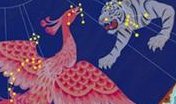285. The cradle of a
newborn was also the winnowing-fan
for tossing up dry grain into the wind:
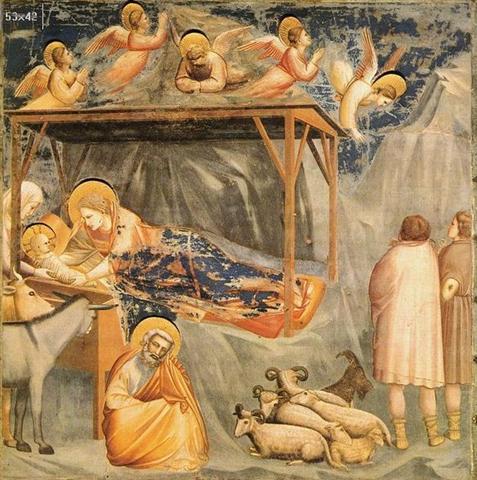

... As has already been mentioned, the
Delphians worshipped Dionysus once a year as
the new-born child, Liknites, 'the
Child in the Harvest Basket', which was a
shovel-shaped basket of rush and osier used
as a harvest basket, a cradle, a manger, and
a winnowing-fan for tossing the grain up
into the air against the wind to separate it
from the chaff. The worship of the Divine
Child was established in Minoan Crete, its
most famous early home in Europe. In 1903,
on the site of the temple of Dictaean Zeues
- the Zeus who was yearly born in Rhea's
cave at Dicte near Cnossos, where Pythagoras
spent 'thrice nine hallowed days' [27 as the
number of nights the Explorers spent in
Oromanga after
Kuukuu
had been carried down into a cave] of his
initiation - was found a Greek hymn which
seems to preserve the original Minoan
formula in which the gypsum-powdered,
sword-dancing Curetes, or tutors, saluted
the Child at his birthday feast. In it he is
hailed as 'the Cronian one' who comes yearly
to Dicte mounted on a sow and escorted by a
spirit-throng, and begged for peace and
plenty as a reward for their joyful leaps
...
The newborn would receive his spirit while the spirit of
some old ones
were tossed up
towards heaven,
... In ancient Mexico they used to strike a
hard physical blow to the body of the
victim, and then the soul of the victim was
believed to ascend directly to the heavens,
sidestepping the perils of the underworld
...
and this occurred at a
solstice.
...
Considering the fact that the crossroads of
ecliptic and Galaxy are crisis-resistant,
that is, not concerned with the Precession,
the reader may want to know why the
Mangaians thought they could go to heaven
only on the two solstitial days. Because, in
order to 'change trains' comfortably, the
constellations that serve as 'gates' to the
Milky Way must 'stand' upon the 'earth',
meaning that they must rise heliacally
either at the equinoxes or at the solstices.
The Galaxy is a very broad highway, but even
so there must have been some bitter millenia
when neither gate was directly available any
longer, the one hanging in midair, the other
having turned into a submarine entrance
...

The Explorers spent 27 nights in Oromanga,
between Hanga Hoonu and Papa O Pea,
|
ST JOHN'S DAY |
JUNE 25 |
26 (177 = 6 * 29½) |
27 |
 |
 |
 |
 |
|
(96) Ga4-12 |
Ga4-13 (96) |
Ga4-14 |
Ga4-15 |
|
p Carinae (159.3) |
φ Hydrae (160.3) |
no star listed (161) |
VATHORZ POSTERIOR = θ Carinae
(162.1),
PEREGRINI = μ Velorum,
η Carinae (162.6) |
|
CHRISTMAS EVE |
DEC
25 |
26 (360 = 177 + 183) |
27 |
|
HANGA HOONU |
|
η
Aquarii (342.1), σ Gruis
(340.4),
SITULA (Water-jar) = κ Aquarii
(342.7) |
ε
Piscis Austrini (343.5), ο
Pegasi, β Gruis (343.8) |
ρ
Gruis (344.0),
MATAR
(Fortunate Rain) = η
Pegasi (344.2), η Gruis
(344.6), β Oct. (344.7) |
λ
Pegasi (345.0), ξ Pegasi
(345.1), ε Gruis (345.3), τ
Aquarii (345.7), ξ Oct. (345.8),
μ Pegasi (345.9) |
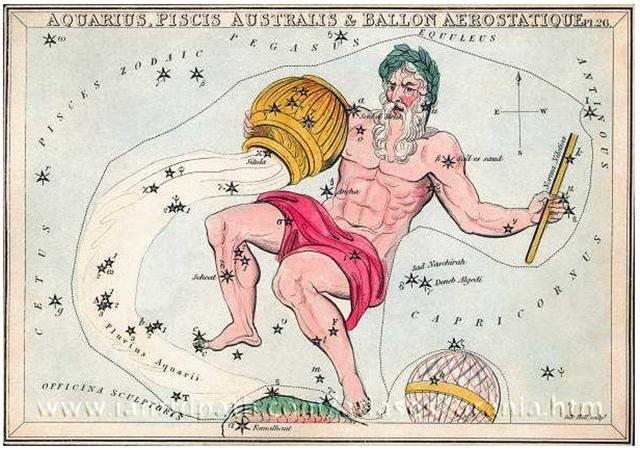
... The Greek
lettered
κ
(Situla) is at the rim of the
Urn, not at the top of the
Nilometer, where instead there
is a Latin letter k. The meaning
obviously is for the viewer to
connect k with κ,
to imagine the Rod inserted into
the Urn (Tent) at the K position
... |
|
JUNE 28 |
29 (180) |
SIRIUS
(true heliacal) |
JULY 1 (*102) |
13 |
 |
 |
 |
 |
|
(100) Ga4-16 |
Ga4-17 (100) |
Ga4-18 |
Ga4-19 |
|
ν Hydrae (163.1) |
no star listed (164)
ALTAIR (α Aquilae)
|
Wings-27 (Snake)
η Oct. (165.4),
ALKES (Shallow Basin) = α
Crateris
(165.6) |
ANA-TIPU-4
(Upper-side-pillar - where
the guards stood)
MERAK = β Ursae Majoris
(166.2),
DUBHE (Bear) = α Ursae
Majoris
(166.7) |
|
DEC 28 |
29 |
30 (364) |
31 (*285) |
|
HANGA HOONU |
OROMANGA |
|
ι Cephei (346.0), λ Aquarii,
γ Piscis Austrini, σ Pegasi
(346.5) |
SCHEAT AQUARII = δ Aquarii
(347.0), ρ Pegasi (347.2), δ
Piscis Austrini (347.4),
FOMALHAUT (Mouth of the
Fish) = α Piscis Austrini,
τ Gruis (347.8) |
FUM AL SAMAKAH (Mouth of the
Fish) = β Piscium
(348.3), ζ Gruis (348.5), ο
Andromedae (348.9) |
Al Fargh al Mukdim-24 (Fore
Spout) /
Purva Bhādrapadā-26 (First
of the Blessed Feet) /
House-13 (Pig)
SCHEAT PEGASI = β Pegasi,
π Piscis Austrini (349.3), κ
Gruis (349.4),
MARKAB PEGASI = α Pegasi
(349.5) |
|
JULY 15 |
*SIRIUS (apparent heliacal) |
17 (*118 = 4 * 29½) |
18 (199) |
7 |
 |
 |
 |
 |
|
Ga5-6 |
(118)
Ga5-7 |
Ga5-8 (118) |
Ga5-9 |
|
no star listed (180) |
π Virginis
(181.0), θ Crucis (181.5) |
12h (182.6)
ο Virginis
(182.1), η Crucis (182.5) |
ALCHITA
(The Southern Tent) = α Corvi, MA WEI (Tail of the
Horse) = δ Centauri
(183.1),
MINKAR
(Beak) = ε Corvi
(183.7), ρ Centauri (183.9) |
|
Sept 17 (260) |
18 (*181) |
19 |
20 |
|
°Sept 13 |
14 (*177) |
15 |
16 |
|
'Aug 21 (*153) |
22 |
23 |
24 (236) |
|
"Aug 7 (*139) |
8 |
9 |
10 (222) |
|
NAKSHATRA DATES: |
|
JAN 14 |
15 (*300) |
16 (*118 + *183) |
17 (*366 - *64) |
|
OROMANGA |
|
DZANEB
(Tail) = ω
Piscium (362.4), γ² Oct.
(362.8) |
η
Tucanae (363.0), ψ Pegasi
(363.1),
32 Piscium
(363.2),
π Phoenicis
(363.4), ε Tucanae (363.6),
τ Phoenicis
(363.9) |
θ
Oct. (364.4) |
Al
Fargh al Thāni-25 (Rear
Spout)
0h (365.25)
CAPH (Hand) = β Cassiopeiae,
SIRRAH
(Navel of the Horse) = α Andromedae
(0.5), ε Phoenicis, γ³ Oct.
(0.8) |
|
March 18
(77) |
19 |
Equinox |
0h (*366) |
|
3-14 (73) |
°March 15 |
16 (*361) |
17 |
|
'Febr
19 (*336) |
20 |
21 |
22 (53) |
|
"Febr
5 (*322) |
6 |
7 (403) |
8 (39) |
|
JULY 26 |
27 |
28 |
29 (210) |
30 (*131) |
 |
 |
 |
 |
 |
|
(2 * 64)
Ga5-17 |
Ga5-18 (128) |
Ga5-19 |
Ga5-20 |
Ga5-21 |
|
Al Áwwā'-11
(Barker) /
Shur-mahrū-shirū-18
(Front or West Shur)
Sombrero Galaxy = M104
Virginis
(191.1), ρ Virginis (191.4),
PORRIMA = γ Virginis,
γ Centauri (191.5) |
ι Crucis (192.2), β Muscae
(192.5),
MIMOSA = β Crucis
(192.9) |
no star listed (193) |
κ Crucis (194.4), ψ Virginis
(194.5), μ Crucis, λ Crucis
(194.6),
ALIOTH (Fat Tail) = ε Ursae
Majoris,
ι Oct. (194.8) |
MINELAUVA = δ Virginis
(195.1),
COR CAROLI = α Canum Ven.
(195.3) |
|
"Aug 18 (*150) |
19 (231) |
Hora Iti 20 |
21 |
22 |
|
JAN 25 |
26 (day 27 from 364) |
27 (392) |
28 |
29 (*314) |
|
OROMANGA |
PAPA O PEA |
|
ξ Phoenicis (9.0), ρ Tucanae
(9.1),
DENEB KAITOS (Tail of the
Sea Beast) = β Ceti,
η Phoenicis (9.4),
AL NITHĀM (String of Pearls)
= φ¹ Ceti
(9.6) |
ACHIRD (Woman with Luminous
Rays) = η Cassiopeiae
(10.7) |
Legs-15 (Wolf)
ν Andromedae (11.0), φ² Ceti
(11.1), ρ Phoenicis (11.2),
η Andromedae
(11.4) |
CIH (Whip) = γ Cassiopeiae,
λ Tucanae (12.4), φ³ Ceti
(12.6), μ Andromedae (12.8) |
φ4 Ceti (13.2) |
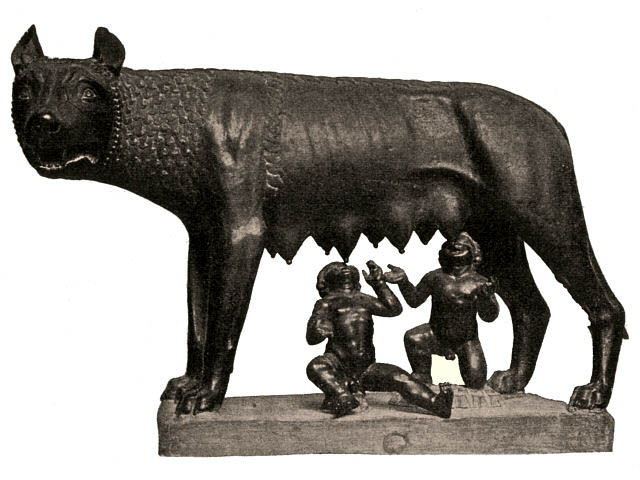 |
|
JULY 31 |
AUG 1 |
|
2 (214) |
3 |
4 (*136) |
5 |
6 |
 |
 |
 |
 |
 |
 |
 |
|
Ga5-22 |
Ga5-23 |
Ga5-24 |
Ga5-25 (135) |
Ga5-26 |
Ga5-27 |
Ga5-28 |
|
δ Muscae (196.5),
VINDEMIATRIX (Grape
Gatherer) = ε Virginis
(196.8) |
13h (197.8)
ξ¹ Centauri (197.1), ξ²
Centauri (197.9) |
APAMI-ATSA (Child of
Waters) = θ Virginis,
ψ Hydrae (198.5),
DIADEM = α Com. Ber.
(198.9) |
AL DAFĪRAH (Tuft) = β
Com. Ber.
(199.4) |
σ Virginis (200.4) |
γ Hydrae (201.0), ι
Centauri (201.4) |
Al Simāk-12 (Lofty) /
Chitra-14 (Bright One) /
Horn-1 (Crocodile) /
Sa-Sha-Shirū-19
(Virgin's Girdle)
/
ANA-ROTO-3
(Middle pillar)
MIZAR (Girdle) = ζ Ursae
Majoris
(202.4),
SPICA = α Virginis,
ALCOR = 80 Ursae Majoris
(202.7)
SADALMELIK (α Aquarii)
|
|
JAN 30 |
31 (214
+ 182) |
FEBR 1 |
2 |
3 |
4 (400) |
5 (36) |
|
PAPA O PEA |
|
no star listed (14) |
1h (15.2)
β Phoenicis (15.1), υ
Phoenicis, ι Tucanae
(15.6), η Ceti, ζ
Phoenicis (15.7) |
Al Batn Al Hūt-26 (Belly
of the Fish) /
Revati-28 (Prosperous) / 1-iku
(0)
MIRACH (Girdle) = β Andromedae,
KEUN MAN MUN (Camp's
South Gate) = φ
Andromedae
(16.0),
ANUNITUM = τ Piscium
(16.5),
REVATI (Abundant) = ζ
Piscium
(16.9)
REGULUS (α Leonis)
|
ν Phoenicis (17.4), κ
Tucanae (17.6) |
no star listed (18) |
ADHIL (Garment's Train)
= ξ Andromedae
(19.3), θ Ceti (19.7) |
KSORA (Knee) = δ
Cassiopeiae
(20.1), ω Andromedae
(20.6), γ Phoenicis
(20.8) |
|
April 4 |
5 |
6 (80 + 16) |
7 |
8 |
9 |
10 (100) |
Double double (2 + 2 =
4 = 2 * 2) was a
star in Lyra close to Vega, we remember, and
this peculiar name suggests a position
similar to that of Janus,

viz. at the
threshold of a new year. The Little King (Regulus in Leo)
culminated in FEBRUARY 1 and the Lucky King
(Sadalmelik in Aquarius) half a year later.
... In the 4th day after 5
February, according to the crooked Gregorian
'calendar canoe' which had omitted to adjust
for the precession from the time of Caesar
to the Council of Nicaea,
...
Taetagaloa [Not-Tagaroa] goes right
over there and steps forward to the stern of
the canoe saying - his words are these: 'The
canoe is crooked.'
(kalo ki
ama).
Instantly Likāvaka is enraged at the
words of the child. Likāvaka says:
'Who the hell are you to come and tell me
that the canoe is crooked?'
Taetagaloa
replies: 'Come and stand over here and see
that the canoe is crooked.' Likāvaka
goes over and stands right at the place
Taetagaloa told him to at the stern of
the canoe. Looking forward, Taetagaloa
is right, the canoe is crooked. He slices
through all the lashings of the canoe to
straighten the timbers. He realigns the
timbers. First he must again position the
supports, then place the timbers correctly
in them, but Kuikava the son of
Likāvaka goes over and stands upon one
support. His father Likāvaka rushes
right over and strikes his son Kuikava
with his adze.
Thus
Kuikava dies.
Taetagaloa
goes over at once and brings the son of
Likāvaka, Kuikava, back to life.
Then he again aligns the supports correctly
and helps Likāvaka in building the
canoe. Working working it is finished
...
... When Julius Caesar established his
calendar in 45 BC he set March 25 (3-25)
as the spring equinox. Since a Julian year
(365.25 days) is slightly longer than an
actual year the calendar drifted with
respect to the equinox, such that the
equinox was occurring on about 21 March in
AD 300 and by AD 1500 it had reached 11
March. This drift induced Pope Gregory XIII
to create a modern Gregorian calendar. The
Pope wanted to restore the edicts concerning
the date of Easter of the Council of
Nicaea of AD 325
...
the Chorti diviners began to
look for 5 proper stones in order to build
their new quincunx map of the year, in form
like a tent or pyramid.
|
6 Febr (365 + 37) |
7 |
8 (404) |
9 (40) |
 |
 |
 |
 |
|
Cb10-9 (631) |
Cb10-10 → 100 |
Cb10-11 |
Cb10-12 (242 = 40 + 202) |
10²
(100) + 11² (121) + 12² (144)
= 365 = 631 - 266:
|
2 Febr (33) |
3 |
4 (400) |
5 (36) |
6 (136 + 266) |
7 |
8 (*324) |
|
132 |
133 |
400 - 266 |
500 - 365 |
136 |
137 |
*58 |
 |
 |
 |
 |
 |
 |
 |
|
Ca10-6 |
Ca10-7 |
Ca10-8 |
Ca10-9 |
Ca10-10 |
Ca10-11 (266) |
Ca10-12 |
|
Tupu te toromiro |
kua noho te vai |
te
moko |
te
marama |
te kava |
manu
rere |
te mauga tuu toga |
|
*78 (= 6 * 13) |
APRIL 5 (95) |
Elnath |
June 10 (161) |
Mintaka |
Alnilam |
Alnitak |
|
*261 (= 9 * 29) |
OCT 5 (278) |
6 |
Dec 10 (344) |
Shaula |
Ras Alhague |
Wolf Pair |
|
... Midsummer is the
flowering season of the
oak, which is the tree
of endurance and
triumph, and like the
ash is said to 'court
the lightning flash'.
Its roots are believed
to extend as deep
underground as its
branches rise in the air
- Virgil mentions this -
which makes it
emblematic of a god
whose law runs both in
Heaven and in the
Underworld ...
The month, which takes
its name from Juppiter
the oak-god, begins on
June 10th and ends of
July 7th.
Midway
comes St. John's Day,
June 24th, the day on
which the oak-king was
sacrificially burned
alive.
The Celtic year was
divided into two halves
with the second half
beginning in July,
apparently after a
seven-day wake, or
funeral feast, in the
oak-king's honour ... |
|
|
ka hahaú
hia
- ko te rima
kua oho |
ku hahaú - kua
ka te ahi i ruga |
e te hau e |
ka oho te
kihikihi o te henua |
|
PYRAMID OF KHUFU
MINTAKA (Belt) = δ Orionis,
υ Orionis (82.4), χ Aurigae
(82.5), ε Columbae (82.6) |
PYRAMID OF KHAFRE
Al Hak'ah-3 (White Spot) /
Mrigashīrsha-5 (Stag's Head) /
Turtle Head-20 (Monkey) /
Mas-tab-ba-tur-tur (Little
Twins)
ARNEB = α Leporis, Crab Nebula =
M1 Tauri
(83.0,
φ¹ Orionis
(83.1),
HEKA = λ Orionis,
Orion Nebula = M42
(83.2),
HATYSA = ι Orionis
(83.5),
φ² Orionis
(83.6),
ALNILAM (String of Pearls) =
ε
Orionis
(83.7) |
PYRAMID OF MENKAURE
Three Stars-21 (Gibbon) /
Shur-narkabti-sha-shūtū-6 (Star
in the Bull towards the south) /
ANA-IVA-9 (Pillar of exit)
HEAVENLY GATE = ζ Tauri,
ν
Columbae (84.0),
ω
Orionis
(84.2),
ALNITAK (Girdle) =
ζ
Orionis,
PHAKT (Phaet) = α Columbae
(84.7) |
ο Aurigae (85.8), γ Leporis
(85.9)
YANG MUN (α Lupi) |
|
June 11 |
12 (403 - 240) |
13 (164 = 84 + 80) |
14 |
|
Al Shaula-17
ALWAID (Mother Camels) = β
Draconis, MAASYM (Wrist) = λ
Herculis
(265.1),
SHAULA (Sting) = λ Scorpii
(265.3),
KUMA = ν Draconis
(265.6),
σ
Arae (265.9)
HAMAL
(α Arietis) |
RAS ALHAGUE = α Ophiuchi
(266.1),
SARGAS = θ Scorpii (266.3),
μ Ophiuchi, π Arae (266.5),
NAN
HAE (Southern Sea) = ξ Serpentis
(266.6), AL
DHĪLI (The Wolf) = ω Draconis,
ι Herculis (266.7) |
λ Arae (267.1),
GIRTAB (Seizer) = κ Scorpii,
ο Serpentis (267.6),
DSIBAN
(Wolf Pair)
= ψ
Draconis
(267.9) |
KELB ALRAI (Dog of the Shepherd)
= β Ophiuchi,
μ
Arae (268.1),
KEW
HO (Nine
Rivers) = μ Herculis
(268.6),
η
Pavonis (268.7),
APOLLYON
= ι Scorpii
(268.9) |
|
Dec 11 (345 = 84 + 261) |
12 (*26 + *240) |
13 |
14 |
|
... On February 9 the Chorti
Ah K'in, 'diviners', begin
the agricultural year. Both the
260-day cycle and the solar year
are used in setting dates for
religious and agricultural
ceremonies, especially when
those rituals fall at the same
time in both calendars. The
ceremony begins when the
diviners go to a sacred spring
where they choose five stones
with the proper shape and color.
These stones will mark the five
positions of the sacred
cosmogram created by the ritual.
When the stones are brought back
to the ceremonial house, two
diviners start the ritual by
placing the stones on a table in
a careful pattern that
reproduces the schematic of the
universe. At the same time,
helpers under the table replace
last year's diagram with the new
one. They believe that by
placing the cosmic diagram under
the base of God at the center of
the world they demonstrate that
God dominates the universe. The
priests place the stones in a
very particular order. First the
stone that corresponds to the
sun in the eastern, sunrise
position of summer solstice is
set down; then the stone
corresponding to the western,
sunset position of the same
solstice. This is followed by
stones representing the western,
sunset position of the winter
solstice, then its eastern,
sunrise position. Together these
four stones form a square. They
sit at the four corners of the
square just as we saw in the
Creation story from the Classic
period and in the Popol Vuh.
Finally, the center stone is
placed to form the ancient
five-point sign modern
researchers called the quincunx
...
 |

The foundation of Rome was
around 2600 years before the
time of rongorongo. |
|
... Seamen have called it
[Mintaka] the Golden Yard-arm;
tradesmen, the L, or
Ell, the Ell and
Yard, the Yard-stick,
and the Yard-wand, as
occupying
3°
between the outer stars, - the
Elwand of Gavin Douglas;
Catholics, Our Lady's Wand;
and the husbandmen of France and
along the Rhine, Râteau,
the Rake. In upper Germany it
has been the Three Mowers;
and it is often the Magi,
the Three Kings, the
Three Marys, or simply the
Three Stars ...
... 'Tell us a story!' said the
March Hare. 'Yes, please do!'
pleaded Alice. 'And be quick
about it', added the Hatter, 'or
you'll be asleep again before
it's done.' 'Once upon a time
there were three little
sisters', the Dormouse began in
a great hurry: 'and their names
were Elsie, Lacie, and Tillie;
and they lived at the bottom of
a well — '
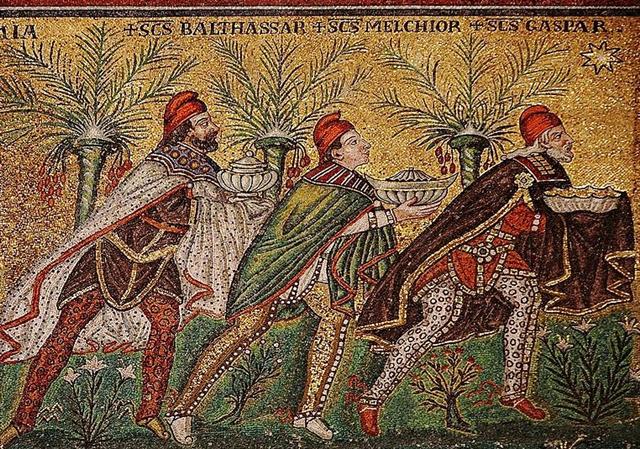 |
And we should also remember
how according to Lockyer the ancient Babylonians seem to have had
a Tortoise about where our own shell-creature Cancer is
located:
|
...
We have
already above (p. 90)
attempted to explain the
striking phenomenon that
the Bull and Pegasus,
both with half-bodies
only, ήμίτομοι, enclose
the Ram between them, by
the assumption that the
latter was interposed
later, when the sun at
the time of the vernal
equinox was in the hind
parts of the Bull, so
that this point was no
longer sufficiently
marked in the sky.
Another
matter susceptible of a
like explanation may be
noted in the region of
the sky opposite to the
Ram and the Bull.
Although we cannot doubt
the existence of an
eastern balance, still,
as already remarked (p.
68), the Greeks have
often called it χηλαί
‘claws’ (of the
Scorpion), and according
to what has been said
above (p. 312), the sign
for a constellation in
the neighbourhood of our
Libra reads in
the Arsacid inscription
‘claw(s)’ of the
Scorpion.
These
facts are very simply
explained on the
supposition that the
Scorpion originally
extended into the region
of the Balance, and that
originally α and β
Libræ represented
the ‘horns’ of the
Scorpion, but later on,
when the autumnal
equinox coincided with
them, the term Balance
was applied to them.
Although this was used
as an additional name,
it was only natural that
the old term should
still be used as an
equivalent. But it also
indicates the great age
of a portion of the
zodiac.' |
|
...
Let us suppose that what
happened in the case of
Aries
and Libra
happened with six
constellations out of
the twelve: in other
words, that the original
zodiac consisted only of
six constellations.
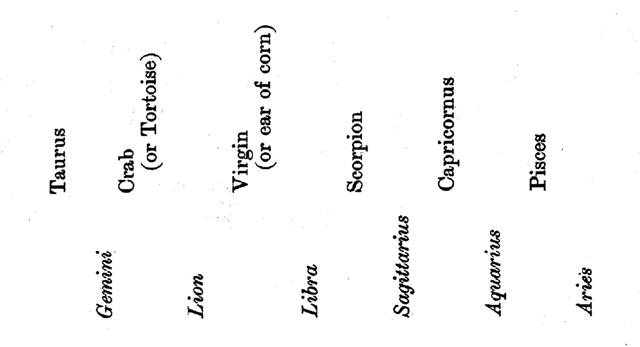
The
upper list not only
classifies in an
unbroken manner the
Fish-Man, the Goat-Fish,
the Scorpion-Man, and
Marduk of the
Babyloniana, but we pick
up all or nearly all of
the ecliptic stars or
constellations met with
in early Egyptian
mythology,
Apis,
The Tortoise¹,
Min,
Serk-t,
Chnemu,
as represented by
appropriate symbols.
1
I think I am right about
the Tortoise, for I find
the following passage in
Jensen, p. 65, where he
notes the absence of the
Crab: ‘Ganz absehend
davon, ob dasselbe für
unsere Frage von
Wichtigkeit werden wird
oder nicht, muss ich
daran erinnern, das
unter den Emblemen,
welche die sogenannten
'Deeds of Salè' häufig
begleiten, verschiedene
Male wie der Scorpion so
die Schildkröte
abgebildet gefunden
wird’. |
I think our Cancer
constellation was a
kind of reflection of the Babylonian Tortoise up
at
the north pole in the sky. When the first half of
the year ended with the month of Jupiter
(at the Door - as in Dormouse) there was
no legitimate ruler present for a while and therefore the
eyes could instead have been looking up towards the
north pole, to the Tortoise for guidance
and in
expectation.

The Gate of Cancer was
the place where the spirits travelled up
and down along the Milky Way river of
time. A quick blow on the head
transferred the spirit of a victim
immediately up to the Tortoise, while
his body remained down on earth.
Although in ancient Egypt - where
everything was 'upside down' - it may
have been the opposite, cfr
sarcophagus = flesh eater.
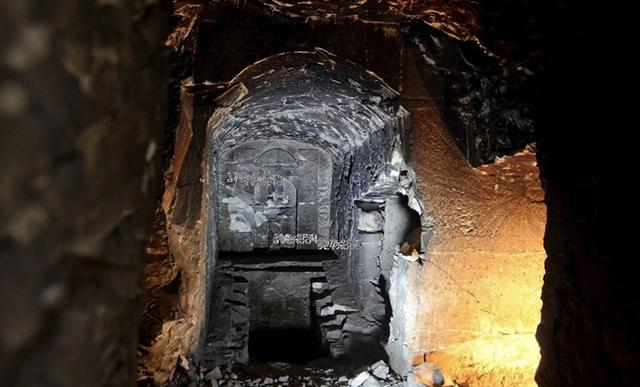
My idea
gains support by the double Arab
illustration of
Cancer below, the original reflected as if
in a 'Janus'
mirror
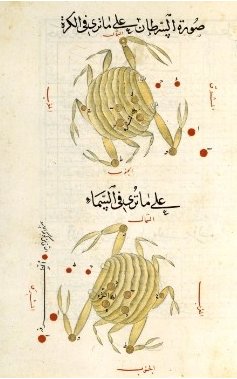
... Looking forward, Taetagaloa
is right, the canoe is crooked. He slices
through all the lashings of the canoe to
straighten the timbers. He realigns the
timbers. First he must again position the
supports, then place the timbers correctly
in them, but Kuikava the son of
Likāvaka goes over and stands upon one
support. His father Likāvaka rushes
right over and strikes his son Kuikava
with his adze.
Thus
Kuikava dies.
Taetagaloa
goes over at once and brings the son of
Likāvaka, Kuikava, back to life.
Then he again aligns the supports correctly
and helps Likāvaka in building
the canoe. Working
working it is finished
...
Between Gemini and Hydra the Chinese had
a quincunx sign:
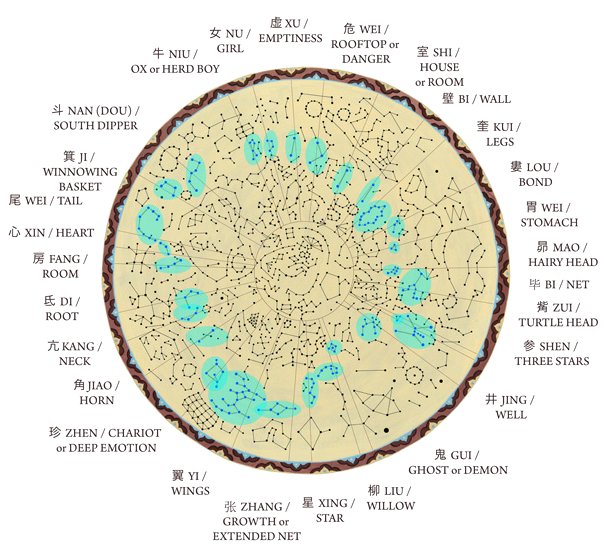
... From the Spirit Leaping Place (Reiga) at the rim of Rano Kau his Spirit evidently had to transform itself into a flying bird in order to find a better place, to quickly transmigrate.
| 20 |
Turtle Head |
Heka (83.2) |
*Ka1-24 (19) |
'June 12 (163) |
Pleione 13 (27) |
| Ga1-19 (20) |
| 21 |
Three Stars |
Alnitak (84.7) |
(Ka1-2) |
'June 14 (165) |
Albatain 2 (29) |
| Ga1-21 (22) |
| 22 |
Well |
Tejat Posterior (95.4) |
Ka2-10 (29) |
'24 (St John's Day) |
Albatain 12 (39) |
| Ga2-1 (32) |
| 23 |
Ghost |
q Cancri (?) |
|
|
|
| |
The Spirit Bird of the Sun possibly corresponds to the Chinese station Ghost.
Its leading star is said to be 'q Cancri'. Strangely the internet site Chinese Astronomy never uses Greek letters for the stars, e.g. is Tejat Posterior (μ Gemini) referred to as 'm Gemini'. However, there is no Greek letter corresponding to the letter 'q'. Possibly the idea was to refer to the ancient Greek letter koppa, a reasonable sign for something dead and only living on in peoples' minds.
There is no star q Cancri (or similar) according to Wikipedia.
The otherwise most obvious choice could have been the Beehive star (ε Cancri), where the Bees (flying souls) should swarm around. Allen: In China it was known by the unsavory title Tseih She Ke, Exhalation of Piled-up Corpses ...
|
I cannot find any quincunx (q) group of 5 stars between
Gemini and Leo and maybe the Sun at ε
Cancri (Exhalation of Piled-up Corpses)

could be located only
indirectly by way of the Girl (ε Aquarii) at the opposite side of the sky
and close to the Full Moon.
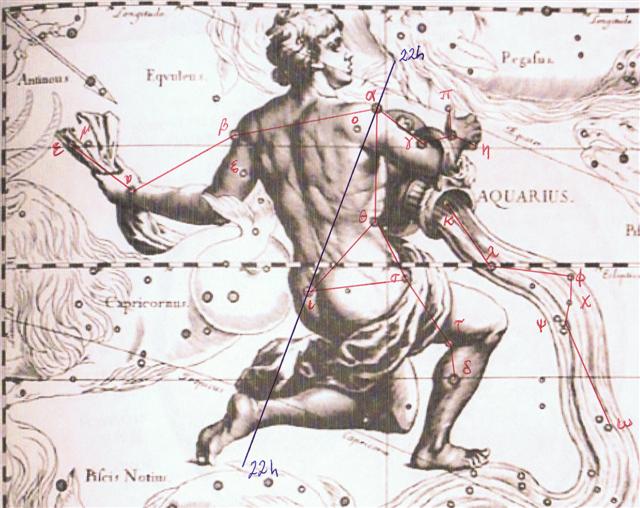
The Beehive star was very weak (6.29) and
hard to find directly, whereas Albali was comparatively bright (3.78).
|
December solstice |
|
8 |
South Dipper |
Φ Sagittarii |
Unicorn |
(284.0) |
Dec 30 (364) |
|
9 |
Ox / Herd Boy |
β Capricornii
(Dabih) |
Buffalo |
(308.0) |
Jan 23 (388) |
|
10 |
Girl |
ε Aquarii (Albali) |
Bat |
(314.8) |
Jan 29 (394) |
| 11 |
Emptiness |
β
Aquarii (Sadalsud) |
Rat |
(325.9) |
Feb 9 (364 + 41) |
|
12 |
Rooftop |
α Aquarii
(Sadalmelik) |
Swallow |
(334.6) |
Feb
18 (364 + 50) |
|
13 |
House |
α Pegasi (Markab) |
Pig |
(349.5) |
Mar 5 (364 + 65) |
|
March equinox |
|
14 |
Wall |
γ Pegasi (Algenib) |
Porcupine |
(1.8) |
Mar 22 (81) |
It should here be rememberd how I earlier have tried to
accommodate the exploits of Makoi (Saturn) when he went on his own, which seem
to refer to the time of Bharani (Yoni, the Place of Birth):
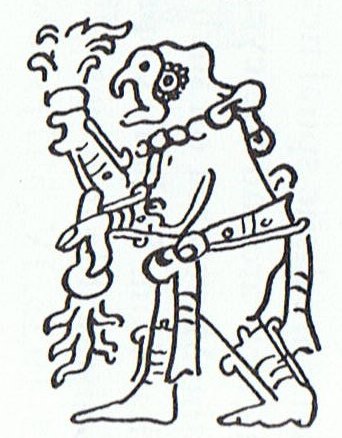
|
MAY 20 (140) |
21 |
22 |
23 (*63) |
24 (144 = 12 * 12) |
 |
 |
 |
 |
 |
|
Ga3-1 (60) |
Ga3-2 |
Ga3-3 |
Ga3-4 |
Ga3-5 |
|
AL TARF (The
End) = β Cancri
(124.3) RAS
ALGETHI (α Herculis)
|
χ Cancri
(125.2),
BRIGHT FIRE = λ
Cancri
(125.4) |
AVIOR = ε
Carinae
(126.4), φ Cancri (126.8) |
ο Ursae Majoris (127.4) |
Pushya-8
(Nourisher)
υ Cancri (128.1),
θ CANCRI
(128.2) |
|
July 23 (204) |
24 (*125) |
25 |
26 |
27 (208) |
|
°July 19 (200) |
20 (*121) |
21 |
22 /
7 |
23 (204) |
|
26 (177 = 6 * 29½) |
'June 27 |
28 |
29 (*100) |
SIRIUS |
|
"June 12 |
13 (*84) |
14 (165 + 365) |
Maro 15 (18 * 29½) |
16 |
|
CLOSE TO THE FULL MOON |
|
NOV 19 |
20 |
21 (325) |
23 (*246 = 6 *
41) |
23 |
|
GREDI = α Capricorni
(307.2), σ Capricorni (307.5),
ALSHAT (The Sheep) = ν Capricorni (307.9) |
Al Sa’d al Dhabih-20 (Lucky
One of the Slaughterers) /
Ox / Herd Boy-9
(Buffalo)
DABIH = β Capricorni
(308.0), κ Sagittarii (308.1),
SADIR
(Hen's Breast) = γ Cygni
(308.4),
PEACOCK = α Pavonis
(308.7) |
KHUFU
MINTAKA (δ
Orionis)
OKUL = π
Capricorni (309.6),
BOS =
ρ Capricorni
(309.9)
ARNEB (α Leporis)
|
KHAFRE
ALNILAM (ε
Orionis)
ο Capricorni (310.2), θ
Cephei (310.5)
HEKA (λ Orionis)
|
MENKAURE
ALNILAK (ζ
Orionis)
ROTTEN
MELON = ε Delphini,
φ Pavonis (311.2), η Delphini (311.4), ζ Delphini, ρ Pavonis
(311.7)
PHAKT (α Columbae)
|
|
Jan 22 |
23 |
24 (*309) |
25 (390) |
26 |
|
°Jan 18 (384) |
19 |
20 |
21 (*306) |
22 |
|
'Dec 26
(360) |
27 |
28 |
29 |
30 (*284) |
|
"Dec 12 |
13 |
14 (348) |
15 |
16 (*270) |
|
Makoi got up and began to familiarize himself with
the (new) land. (This took place) on the fifteenth day of
the month of June ('Maro'). He went toward the sheer
face of the rocks (titi o te opata), was astonished (aaa),
came up to the middle (of the outer rim of the crater), and
stood at the very edge.
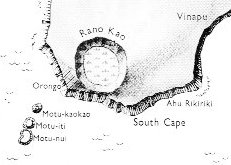
He looked down and saw the 'Pu Mahore of
Hau Maka' (on the coast) and said, 'There it is,
the hole of the mahore fish of Hau Maka!' He
turned his face and looked toward the back (i.e., in the
direction of the crater). No sooner had he seen how the dark
abyss opened up (below him), when a fragrant breeze came
drifting by. Again Makoi said, 'This is the dark
abyss of Hau Maka'.
He turned
around, walked on in utter amazement, and arrived at the
house. He spoke to Ira, 'Hey you, my friends! How
forgetful we (truly) are. This place is adequate (? tau
or 'beautiful'), the dark abyss lies there peacefully!'
Ira
replied, 'And what should that remind us of up here?' All
arose and climbed up. They went on and arrived; they all had
a good look (at the inside of the crater). They returned
home and sat down. Night fell, and they went to sleep. |
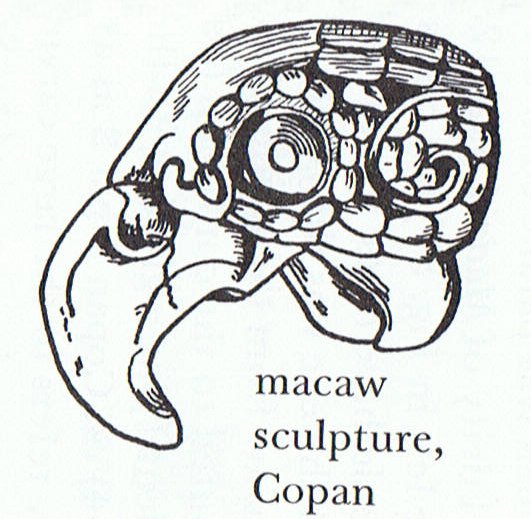 |
|
The 4 places which
Makoi saw by himself:
Possibly these places were alluding also to the change
from the Julian spring equinox to the Gregorian spring
equinox:
... When the
Pope rearranged the day for spring equinox from number
84 ('March 25) to number 80 (ºMarch 21) the earlier
Julian structure was buried, was covered up (puo).
At the same time the Pope deliberately avoided to
correct the flow of Julian calendar days for what he may
have regarded as 4 unneccesary leap days prior to the
Council of Nicaea. Thus his balance sheet for days was
in order. The day numbers counted from the equinox were
increased with 4 and this was equal to allowing the 4
'unneccessary' leap days to remain in place. But he had
moved spring equinox to a position which was 4 days too
early compared to the ancient model
...
These '4
unneccessary leap days' (prior to the Council of Nicaea)
were equal in number to the precessional distance in
time between the Pope and the time of rongorongo. The
Gregorian calendar could therefore be easily understood
by the Easter Islanders. The Pope had created a 'crooked
calendar' but since his time the precession had fixed it
...
 |
|
MAY 25 (5-25) |
26 (*266) |
27 |
28 (348) |
 |
 |
 |
 |
|
Ga3-6 |
Ga3-7 |
Ga3-8 |
Ga3-9 (68) |
|
Āshleshā-9 (Embrace) /
Willow-24 (Stag)
π¹ Ursa Majoris,
δ Hydrae (129.6),
AL MINHAR AL SHUJĀ = σ Hydrae,
MUSEIDA = π² Ursae Majoris
(129.9)
RAS
ALHAGUE (α Ophiuchi) |
Al Nathrah-6 (Gap)
BEEHIVE (Exhalation of Piled-up
Corpses) = ε Cancri,
η Pyxidis
(130.4),
XESTUS = ο Velorum
(130.5),
ζ Pyxidis
(130.7),
ASCELLUS BOREALIS = γ Cancri,
β Pyxidis
(130.9) |
Extended Net-26a (Ox) /
Arkū-sha-nangaru-sha-shūtu-12
(Southeast Star in the Crab)
η Hydrae
(131.0),
ASCELLUS AUSTRALIS = δ Cancri
(131.4),
KOO SHE (Bow and Arrow)
= δ Velorum
(131.6),
α Pyxidis
(131.8),
ε Hydrae
(131.9) |
ι Cancri (132.0),
ρ Hydrae
(132.4) |
|
July
28 |
29 (*130) |
30 |
31
(212) |
|
°July
24 |
25 |
26 (*127) |
27 (208) |
|
'July 1 |
2 |
3
(*104) |
4 (185) |
|
"June
17
Te Kioe Uri |
18
Te Piringa Aniva |
19 (*90)
Te Pei |
20 (171 =
185 - 14)
TE POU |
|
NAKSHATRA
DATES: |
|
NOVEMBER 24 |
25
(*249) |
26 |
27 (331) |
|
ROTANEV = β Delphini, ι Delphini (312.3), τ
Capricorni (312.6), κ Delphini (312.7),
SVALOCIN = α Delphini,
υ Capricorni, υ Pavonis (312.8) |
μ², μ¹ Oct. (313.2),
DENEB CYGNI = α Cygni
(313.5), β Pavonis (313.6), δ Delphini (313.8) |
Al Sa’d al Bula'-21 (Good Fortune of
the Swallower) /
Dhanishta-24 (Most Famous) /
Girl-10 (Bat)
YUE
(Battle-Axe) = ψ Capricorni
(314.3),
GIENAH CYGNI = ε Cygni, η
Cephei (314.5), γ Delphini (314.6),
σ Pavonis (314.7),
ALBALI = ε Aquarii
(314.8) |
BATEN ALGIEDI = ω Capricorni (315.8) |
|
Jan 27 |
28 (393) |
29 (*314) |
30 |
|
°Jan 23 |
24 |
25 (*310) |
26 |
|
'Dec
31 |
'Jan 1 |
2 |
3
(*288) |
|
"Dec
17 |
18 |
19 (*273) |
20 (354) |
|
When it grew light,
Makoi arose again. He went off to further explore
the area. He went along and came to the 'dark rat'. He
looked around and said: 'Here we are at the dark rat of
Hau Maka'. He gave it the name Te Kioe
Uri A Hau Maka. He went on and came to Te Piringa
Aniva. When he arrived there, he looked around and
gave the name Te Piringa Aniva. He went on and
came to Te Pei, looked around, and said, 'Here it
is!' So he gave the name Te Pei A Hau Maka. He
went on, all alone he went on, and came to Te Pou.
When he arrived there, he looked around and again said,
'Here it is!' and gave the name Te Pou A Hau Maka. |
|
For some reason nothing
was said about Te Manavai, which in the journey
of the kuhane came between Poko Uri and
Te Kioe Uri.
... The
dream soul climbed up and reached the rim of the
crater. As soon as the dream soul looked into the
crater, she felt a gentle breeze coming toward her.
She named the place 'Poko Uri A Hau Maka O Hiva'.
The dream soul continued her search for a residence
for King Matua.
The dream soul of Hau Maka reached (the
smaller crater) Manavai and named the place 'Te
Manavai A Hau Maka O Hiva'. The dream soul went
on and reached Te Kioe Uri. She named the
place 'Te Kioe Uri A Hau Maka O Hiva' ...
... Manavai
Hollow where rainwater accumulates; anciently, small,
round gardens, preferably situated in low shady spots,
where the mahute tree was grown. Vanaga. 1.
Brain. 2. Valley, ravine, river, torrent, brook;
manavai miro, orchard, Mq.: manavai, valley,
brook. Ta.: anavai,
river, brook. It scarcely appears that these are fully
coordinate. In Tahiti anavai has a clear
etymology, ana
meaning the bed of a stream.
In Rapanui and in the Marquesas mana most readily
associates with maga, as water in a forked bed.
Churchill
...
However, Manuscript E
seems to offer an explanation in the way Makoi
remembered how he documented the name: ... I wrote (ta)
Te Manavai A Hau Maka on the surface of a banana
leaf (kaka), and this is how I left it ... |
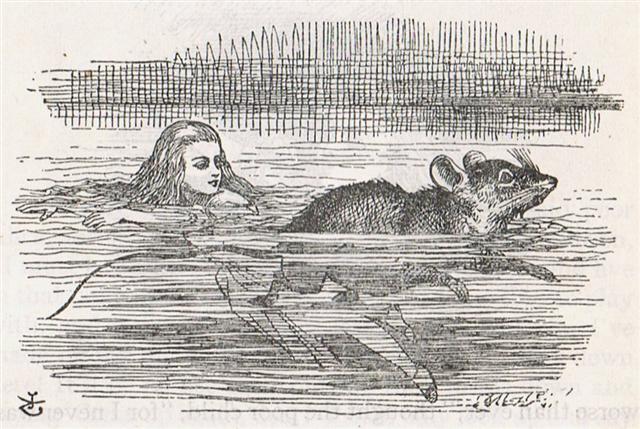
|
































